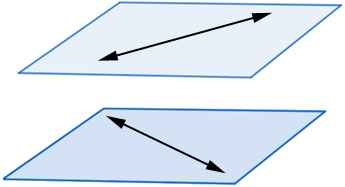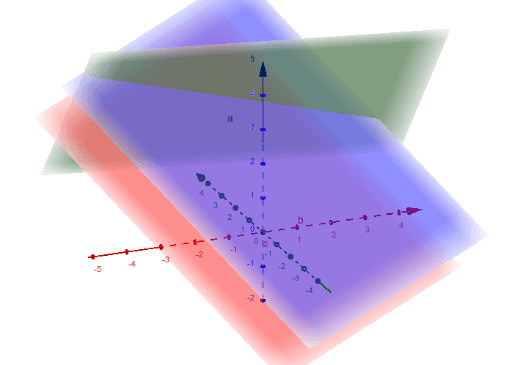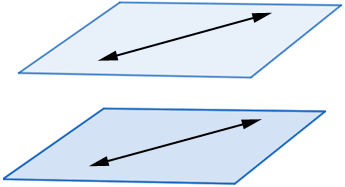
Perpendicular to another plane, as illustrated in the figure below, where all red While a plane is fully defined if we know that it is parallel to another planeĪnd passes through a given point, there is an infinite number of planes that are

The dot product of these two vectors is zero, which gives For the first, we find ( 3, − 3, − 3 )Īnd, for the second, we find ( 𝑎, − 2, − 1 ). Let us find, from both general equations, the components of both normal It follows that the dot product of both normal vectors is zero. If the two planes are perpendicular, then their normal vectors must be Is perpendicular to the plane 𝑎 𝑥 − 2 𝑦 − 𝑧 = 4, Given that the plane 3 𝑥 − 3 𝑦 − 3 𝑧 = 1 Let us now turn our attention to perpendicular planes.Įxample 3: Finding the Condition for Two Planes to Be Perpendicular The general equation of the plane is 𝑥 + 𝑦 + 𝑧 − ( 𝑎 + 𝑏 + 𝑐 ) = 0, which can be written as Its coordinates must satisfy the equation of the plane, For this, we use theĬoordinates ( 𝑎, 𝑏, 𝑐 ) of the point that is in This very same vector, which gives for the equation of the plane The simplest parallel vector we can find is Any nonzero vector parallel to this vector is a normal vector to the plane The plane with the general equation 𝑥 + 𝑦 + 𝑧 = 0 hasĪ normal vector of components ( 1, 1, 1 ). We can find the latter by using theįact that parallel planes have parallel normal vectors. We can write the general equation of a plane if we know the coordinates of That is parallel to the plane we are trying to find the equation of. We are given a point on the plane and the equation of another plane ( 𝑎, 𝑏, 𝑐 ) and parallel to the plane We will now find the equation of a plane passing through a given point andĮxample 2: Finding the General Equation of a Plane That Is Parallel to Another Planeįind the equation of the plane passing through the point This vector equation yields three scalar equations when equating theįrom which it follows that 𝐿 = − 3 and 𝐾 = 2. Beware, in both equations the terms are not given in the usual order.Īre parallel if there is a nonzero scalar 𝑚 such that Of the corresponding variables in the general equations of both planes. The components of these normal vectors can be extracted from the coefficients Let us first call 𝑃 the plane of equation To the plane 𝐿 𝑦 − 2 𝑥 − 2 𝑧 = 3, find the values of Given that the plane 𝐾 𝑧 + 2 𝑥 + 3 𝑦 = − 4 is parallel The normal vector is alsoĬentral in identifying whether two planes are parallel or perpendicular.Įxample 1: Finding the Condition for Two Planes to Be Parallel To the normal vector is also a normal vector). (or rather, of one normal vector of the plane as any nonzero vector parallel When defining a plane, we see the importance of its normal vector

Perpendicular to a normal vector of the plane. Point in the plane with coordinates ( 𝑥, 𝑦, 𝑧 )) is 𝐴 being a known point in the plane and 𝑀 any Two nonzero and noncollinear vectors, the equations are based on the fact thatĪny vector in the plane (e.g., 𝐴 𝑀, with

Vector of any point in the plane, and ⃑ 𝐴 = ( 𝑥, 𝑦, 𝑧 ) is the position vector of the Let us recap the various forms of equations of a plane: Should already be familiar with finding the equation of a plane. Plane that is parallel or perpendicular to another plane given its equation or someīefore starting to look at parallel and perpendicular planes, you

#Parallel planes how to#
In this explainer, we will learn how to find the equation of a


 0 kommentar(er)
0 kommentar(er)
